by Joyce Richardson
When I was a PE teacher, I learned a lot about play. As grandmother of Ella – who is deafblind and now thirteen years old – I’ve learned much more. This is what I want to write about, but first a few insights I’ve gained from studying the subject.
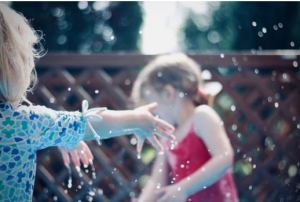 Play means engaging in activity for enjoyment, is usually spontaneous and has no rules unless imposed by the players, who can leave or quit at any time. Play is free and players take responsibility for the narratives.
Play means engaging in activity for enjoyment, is usually spontaneous and has no rules unless imposed by the players, who can leave or quit at any time. Play is free and players take responsibility for the narratives.
As Peter Gray reflects in his book Free to Learn, there is no serious or practical purpose in play. It is intrinsically motivated, an expression of freedom and there is no fear of failure: in fact, “It is the universal language of childhood.” Gray also goes on to say “without play young people fail to acquire the social and emotional skills necessary for healthy psychological development.”
The philosopher Wittgenstein states that “primitive natural expressions such as fear, anger, joy, pain, playfulness…..provide the basis for the acquisition of language – verbal and non-verbal which can be woven into social reactions.” The power of the imagination and actually imagining things strengthens the brain and nothing stimulates the brain more than play, which is a transformative force.
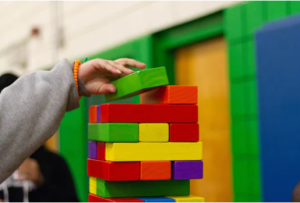 Active, outdoor play is beneficial to children’s health and well-being. The brain is more ready to learn and, as Pam Jarvis tells us, the vestibular area is also stimulated. Rough-and-tumble and pretend play seem to reduce aggressive behaviour. They help areas of the brain that deal with emotion and sociability. As Gray notes, play fighting is an exercise in restraint as players do not hurt each other. When you are playing at being a character you show self-control and this requires mental effort: “the mind at play is active and alert, but not stressed”.
Active, outdoor play is beneficial to children’s health and well-being. The brain is more ready to learn and, as Pam Jarvis tells us, the vestibular area is also stimulated. Rough-and-tumble and pretend play seem to reduce aggressive behaviour. They help areas of the brain that deal with emotion and sociability. As Gray notes, play fighting is an exercise in restraint as players do not hurt each other. When you are playing at being a character you show self-control and this requires mental effort: “the mind at play is active and alert, but not stressed”.
Grandparents and play
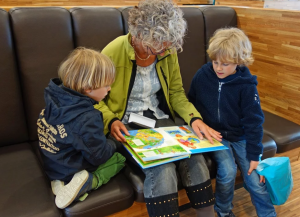 Intergenerational play is very important, as grandparents have time to spend with youngsters, can listen to them, play with them, read to them, tell stories, sing songs and nursery rhymes (which are full of rich vocabulary). Parents, who are often busy doing the cooking, washing, shopping, emails and other activities, don’t always have enough time for all the repetition this involves.
Intergenerational play is very important, as grandparents have time to spend with youngsters, can listen to them, play with them, read to them, tell stories, sing songs and nursery rhymes (which are full of rich vocabulary). Parents, who are often busy doing the cooking, washing, shopping, emails and other activities, don’t always have enough time for all the repetition this involves.
This brings me to the United Nations Convention on the Rights of the Child which recognises ‘the right of every child to play, rest, have leisure, enjoy recreational activities and have free and full participation in cultural and artistic life’. Therefore the deafblind, MSI (multisensory impairment) and all disabled children must have the opportunity to play.
Because my own granddaughter is deafblind, she hasn’t been able to copy other children (an important part of developing play) so through following her lead I’ve been able to develop some activities which give her fun and laughter. As Frieberg notes, the parents of an MSI child are encouraged “not to read the face of the child but its hands, as the face may remain immobile or [look] bored when playing with a toy or searching for it, but the hands and the mouth exploration show the value of the plaything or the play.”
Learning through play with Ella
Here are some of the play activities Ella and I have engaged in (you may be interested to read on but you have permission to quit!)
The process of building up the ‘game’ is of paramount importance especially in the case of an MSI child for whom repetition is the key to progress.
When Ella was a baby she loved rocking on our knees and I remember saying to my daughter ”Do you think she will still be rocking when she’s 8?”, she was and is, and I now know that Ella was actually doing this to self-regulate and stimulate her vestibular cortex and proprioception sense – clever girl! Is this what we are doing for ourselves and the child we are holding when we do the ‘nursery rock’? Nowadays Ella has regulation drives in the car which restore her balance after an activity or a day’s work – same principle. This is Ella’s relaxation and leisure.
I tell the story of the Three Mooses, an adaptation of the Three Billy Goats Gruff which stems from when Ella had some vision and I had a cup depicting three mooses. This has changed radically with Ella starting the narrative at different points. She’s learned all she needs from this and now says “Over there” and mouths “Oh no, you won’t!” She also sings the start of “I’m a troll holy whole……” She loves my rings and jewellery is a point of recognition for Ella. I tell her the function of each ring and she starts the story with “married” (the concept of marriage, engagement and eternity through these rings shows advanced realisation I think).
When Ella’s siblings were learning phonics and Ella was wanting to climb the stairs (no mean feat in itself) she always drummed on the banister so I started to sing “Bbbbbanister” to the tune of ‘Here we go round the Mulberry Bush’. We also did “Wwww” for wall. Ella loved this and also noted that there was no banister on that side, occasionally Ella would supply the word banister.
Then we played emptying the clothes drawers. My saying what they were led Ella to saying “Brrrr cold” for a jumper, then finding a buttonhole and saying “hole” as she desperately tried to fasten a button on a pair of jeans. This skill is still eluding Ella although one of my goals is to help her conquer it, but not on a pair of jeans. It’s not easy to do if you have your eyes closed so I will use a doll with a nice big button. Ella also likes zips and Velcro fastenings on her shoes – she plays pulling the Velcro on and off for quite a while before she puts her shoes on.
Ella uses some BSL signs with her intervenors and this of course helps communication. I do vowels in her hand referring to members of the family. I also do body parts, always using the correct term, on hands, feet, arms and legs. Ella asks for all these and I believe this is ‘play’.
Promoting play for the sake of play
Sense (the charity for visually impairment) says ’promote play for the sake of play’ – I couldn’t agree more. Ella has got past water play but I think washing up, which has a purpose, gives her chance to enjoy water, as does bathing and swimming.
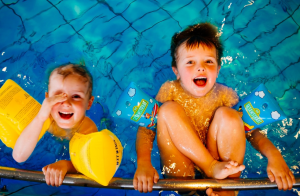 I believe that the process of building up an activity is as important as the goal. In fact, the process is where the learning takes place so repetition and practice for an MSI child is more important than anything else. Through repeating the activity till it is learned, the child grows in confidence and this means that she will show you when it is time to move on. It may take a long time for the next step, so I am learning to wait and to have patience till Ella has come to the end of the learning process.
I believe that the process of building up an activity is as important as the goal. In fact, the process is where the learning takes place so repetition and practice for an MSI child is more important than anything else. Through repeating the activity till it is learned, the child grows in confidence and this means that she will show you when it is time to move on. It may take a long time for the next step, so I am learning to wait and to have patience till Ella has come to the end of the learning process.
The Vygotskyian philosophy reminds us that play is the foundation of all learning. As John Goodwin, CEO of the Lego Foundation says, ”To be superhero is to lead, to host a teddy for tea is to organise, to build a fort is to innovate, to play is to learn”. So let’s play!

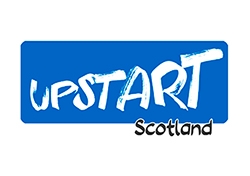

Dear Joyce – many, many thanks for this article. As a life long believer in the power of play this description has both humbled and taught me. So true, so poignant, so important. All children need time to play and all children benefit for knowledgeable patient adults to support and extend. Lucky Ella to have you, and the family in her life. Love Alison, G, R and D’s nursery teacher!